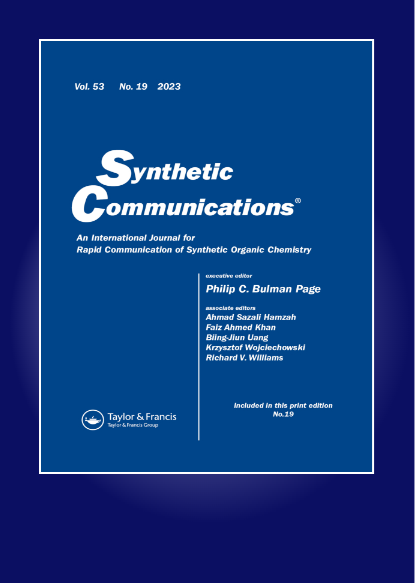Synthesis and antitumor activity of selenocyanate derivatives based on 2-amino-5-(4-chlorophenyl)furan/thiophene scaffolds
IF 1.8
3区 化学
Q3 CHEMISTRY, ORGANIC
引用次数: 0
Abstract
In this study, 2-amino-5-(4-chlorophenyl)furan/thiophene were synthesized via Paal-Knorr and Gewald cyclization strategies. A series of novel furan/thiophene selenocyanate derivatives were constructed by introducing selenocyanate groups with varying chain lengths through amide bonds. All compounds were structurally characterized using NMR and HR-MS analyses. MTT assay for antitumor activity revealed that several compounds exhibited superior efficacy compared to cisplatin. Notably, furan selenocyanate 5c showed significant inhibitory activity against HepG-2 cells (IC50 = 8.64 ± 0.94 μM), while thiophene selenocyanate 11d demonstrated remarkable inhibition against HeLa and MCF-7 cells with IC50 values of 6.39 and 6.77 μM, respectively. Structure-activity relationship (SAR) analysis indicated that the carbon chain length significantly influenced antitumor activity, with the C8-chain thiophene selenocyanate derivative 11d exhibiting optimal selectivity for HeLa and MCF-7 cells. This study provides important references for development of novel selenium-containing antitumor drugs.
基于2-氨基-5-(4-氯苯)呋喃/噻吩支架的硒氰酸酯衍生物的合成及其抗肿瘤活性
本研究通过Paal-Knorr和Gewald环化策略合成了2-氨基-5-(4-氯苯基)呋喃/噻吩。通过酰胺键引入不同长度的硒氰酸基团,构建了一系列新的呋喃/噻吩硒氰酸酯衍生物。所有化合物均通过NMR和HR-MS进行了结构表征。MTT抗肿瘤活性测定显示,几种化合物的抗肿瘤活性优于顺铂。其中,硒氰酸呋喃5c对HepG-2细胞的IC50值为8.64±0.94 μM,而硒氰酸噻吩11d对HeLa和MCF-7细胞的IC50值分别为6.39和6.77 μM。构效关系(SAR)分析表明,碳链长度显著影响其抗肿瘤活性,其中c8链硒氰酸噻吩衍生物11d对HeLa和MCF-7细胞具有最佳选择性。该研究为新型含硒抗肿瘤药物的开发提供了重要参考。
本文章由计算机程序翻译,如有差异,请以英文原文为准。
求助全文
约1分钟内获得全文
求助全文
来源期刊

Synthetic Communications
化学-有机化学
CiteScore
4.40
自引率
4.80%
发文量
156
审稿时长
4.3 months
期刊介绍:
Synthetic Communications presents communications describing new methods, reagents, and other synthetic work pertaining to organic chemistry with sufficient experimental detail to permit reported reactions to be repeated by a chemist reasonably skilled in the art. In addition, the Journal features short, focused review articles discussing topics within its remit of synthetic organic chemistry.
 求助内容:
求助内容: 应助结果提醒方式:
应助结果提醒方式:


